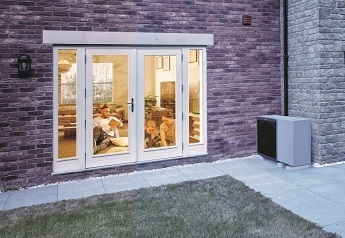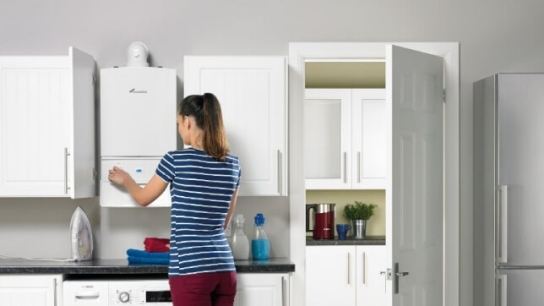Electric Storage Heaters Explained
Modern storage heaters are a 100% efficient, zero-emissions alternative to central heating. Here we answer all your night storage heating questions.
What's a storage heater?
A storage heater, also known as a night storage heater, is a type of electric heater that usually makes the most of off-peak electricity.
It spreads the heat around the room using what's known as convection currents. As the hot air from the heater rises, it pulls in cooler air. In turn, this gets warmed up by the heater. And the cycle goes on, evenly spreading heat around the room.
Are you already decided on getting a storage heater?
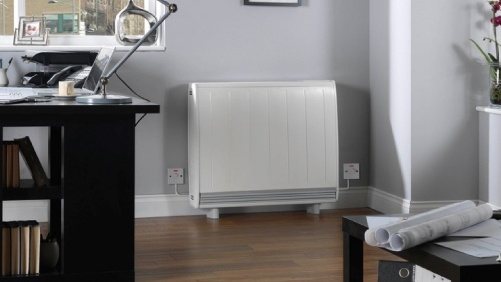
How does an electric storage heater work?
Like other electric heaters, storage heaters contain a heating element. These are usually ceramic or clay bricks because they can hold a lot of heat. During the night, the storage heater uses off-peak electricity (could be Economy 7) to heat up and store the heat in the bricks. This is then released during the day to heat your home.
Are storage heaters worth getting?
Most storage heaters are 100% efficient because all the electricity they use is converted to heat. And if you get your electricity on a renewable tariff – see below – they’re a zero carbon emissions way to heat your home.
The catch is that electricity currently costs more than gas. So electric heating can be expensive to run. This is why it's good to have a suitable off-peak electricity tariff, such as Economy 7.
What's an off-peak electricity tariff, such as Economy 7?
Electricity companies – us included - provide cheaper energy when demand isn’t so high (i.e during 'off peaks'). This is basically overnight – or at weekends – when offices and factories aren’t using as much.
You might have heard of an Economy 7’ tariff – so-called because households get seven hours of cheaper electricity overnight. There are even 'Economy 10' tariffs – providing cheaper electricity over 10 hours.
Other types of 'Time of use' tariffs can offer even better value, tailored to how you use electricity. These require a smart meter, so your supplier can track the time you've used electricity.
And as tariffs become more advanced – along with smart meter technology – it's quite likely in the future that we'll pay a different price for electricity at multiple times of the day.
How to use a night storage heater
Electric storage heaters come with an output controller so you can control how much heat is released into the room. And the basics for how storage heaters work have stayed pretty much the same over the years.
The difference with today’s modern automatic storage heaters is that they come with far more sophisticated controls than older manually controlled models.
Older models only gave basic control over how much heat they stored or released. So it was easy to either set up the heater to store too much heat, causing the room to overheat. Or store too little, or release it too soon… Which meant rooms didn’t stay warm into the chilly evenings.
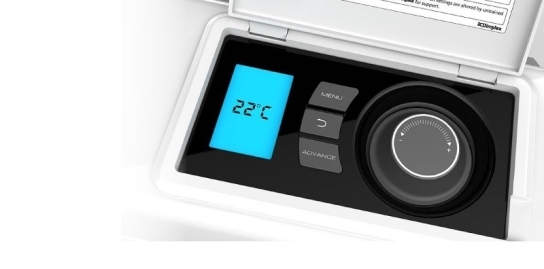
How to use modern storage heaters
There are new rules, which mean that modern storage heaters have to have casings to hold more heat, or fans to help distribute the warm air around the room when needed. They also have more sophisticated controls, such as:
- A thermostat so you can heat the room to your desired temperature.
- Intelligent charging to store the right amount of heat
- Some come with advanced digital controllers – a bit like a central heating system
- Others connect to your WiFi network, so you can control them from your phone
- Some storage heaters can respond to changes in the room’s temperature and adjust the heating automatically
Electric storage heater installation
Storage heaters can be simpler to install than gas central heating because there’s no need for a gas boiler, pipework or flue. This generally makes them cheaper.
Our installers will talk you through the best heating options for your needs and budget. They'll install your heaters and explain how everything works. And, they'll leave your home nice and clean.
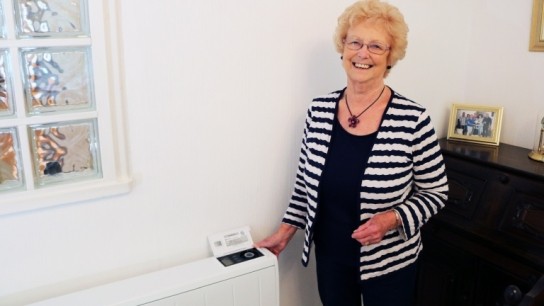
Electric storage heater cost
Heat charging costs
When charging heat, a small electric storage heater may consume about 1kW, while larger models might use nearer 3kW. That’s a lot of electricity – but remember it’s the maximum amount of power it’ll use. And some storage heaters stop using energy when they’ve stored enough heat. So this figure is just a guide.
Running costs
Working out your storage heater's running cost is trickier, as it depends on how much heating your room needs. To give you an indication, a medium-sized storage heater that consumes 2kW, and charges at full power for seven off-peak hours will use 14 kilowatt-hours (kWh) of electricity. At the average off-peak electricity rates, as of October 2022, 20p per kWh, that’s £2.80 per day to run this 2kW storage heater.
Seasonal costs
Obviously, you don’t need heating all year round. So in spring and autumn, your storage heater running costs will be much lower – and in summer, they might be non-existent. So charging the same heater in the above example for only two hours in warmer months will bring the cost will come down to less than 80p per day.
Can I repair an electric storage heater?
With no valves, pumps or burners, storage heaters are simple and less likely to go wrong. But if your storage heater stops working, there are a few things you can do to troubleshoot the problem.
- Check that the controls are set correctly
- Check that the storage heater hasn’t shut off simply because someone’s opened a window in the room
- Read the instruction manual because this will have troubleshooting advice specific to your model
What if none of my storage heaters are working?
If none of your storage heaters are working, it’s likely there’s a problem with the heating consumer unit. You can check for a tripped circuit breaker. Otherwise, call an electrician for advice – especially if the problem happens more than once.
How do I get my storage heater repaired?
If you’ve only got a problem with one heater, you may need a storage heater repair. If the storage heater’s still under warranty – or you have a service contract for it – call the customer service number for advice. If not, try the manufacturer’s helpline, in case they have a list of approved electricians to recommend.
Can I remove a storage heater
Moved into a property with some old storage heaters that you don't want?
To remove it will depend on how the storage heater has been wired. If it only uses a standard plug socket, you can unplug it and remove it from the wall. Otherwise, you might need an electrician to make the wiring safe. If in doubt, always call out a qualified electrician to come and check for you.
Are storage heaters right for my home?
Traditionally, storage heaters were recommended if you didn’t have a mains gas supply in your home. Today some people are looking to replace their central heating with storage heaters and some of the reasons are:
- Storage heaters are comparatively easy to install
- They don’t require regular maintenance or servicing
- They have a long service life, with some manufacturers offering a 30-year warranty. This can make storage heating a particularly appealing option for landlords.
- It may be difficult or impractical to install central heating, which is the case in listed properties.
- Switching to electric heating is a better choice for the environment, especially when the electricity comes from renewable or low carbon sources.
Heating our homes accounts for around 15% of the UK’s total carbon emissions(1) – so it’s a huge contributor to climate change. And if the government is to meet its target of achieving net-zero emissions by 2050, we need to find alternatives to fossil fuels (gas and oil) for heating our homes.
How to best use my storage heaters?
- Make sure you’re using off peak electricity for as much of your heating as possible
- Check your Economy 7 or off peak times with your energy supplier as they vary depending on where you live
- Are your heaters storing the right amount of heat? Most modern storage heaters do this automatically but on older models, you need to set the charge controller
- Set the amount of heat to be released, and when.
How to set your storage heater:
Storage heaters have two controls:
-
Input - controls how much heat is stored overnight
-
Output - controls how fast the heat is let out
The input controls how much heat is stored overnight, while the output controls how fast the heat is let out. Older versions of storage heaters generally have manual settings so you have to adjust the settings regularly, sometimes even daily.
Using the input control
Setting this depends on how cold it’ll be the next day. If you think it will be cold - turn up the input the day before. If you think it will be warmer - turn it down. The higher the input – the more energy will be used and the more it will cost to run.
Remember that any change you make to the input setting won’t work until the following day.
Using the output control
The higher the output setting, the faster the heat will be let out. Even on the minimum setting the heater will still release the heat. It’ll do it more slowly and over a longer period of time.
You have to recharge your heater overnight if it’s released all of its heat. Set your output control to suit your daily routine so you don’t have to get extra heating costing you more.
You can make the heat last into the evening by putting your output control on the lowest setting possible most of the daytime and then again when you go to bed.
If you get cold in the evening you can turn up the output to a higher setting to let the remaining heat escape faster. But don’t forget to turn it back down to minimum before you head off to bed.
On manually controlled models, you want to shut the heat off when you’re going out. And turn it right down when you’re not using a room.
Programmable heaters let you schedule regular heating times so you can pre-heat rooms.
App-controlled heaters usually come with more advanced features, letting you alter the schedule remotely, for instance, via your phone.
- To make sure you have some heat left for the evenings, try not to overheat the rooms during the day. Otherwise, you’ll need to use the ‘boost’ or ‘balancing’ feature – if you have it – which uses peak time electricity.
- Remember to turn your storage heaters off when you go on holiday. If you’re heading away in winter, keep them on a low setting to prevent your home from getting too cold and damp.

